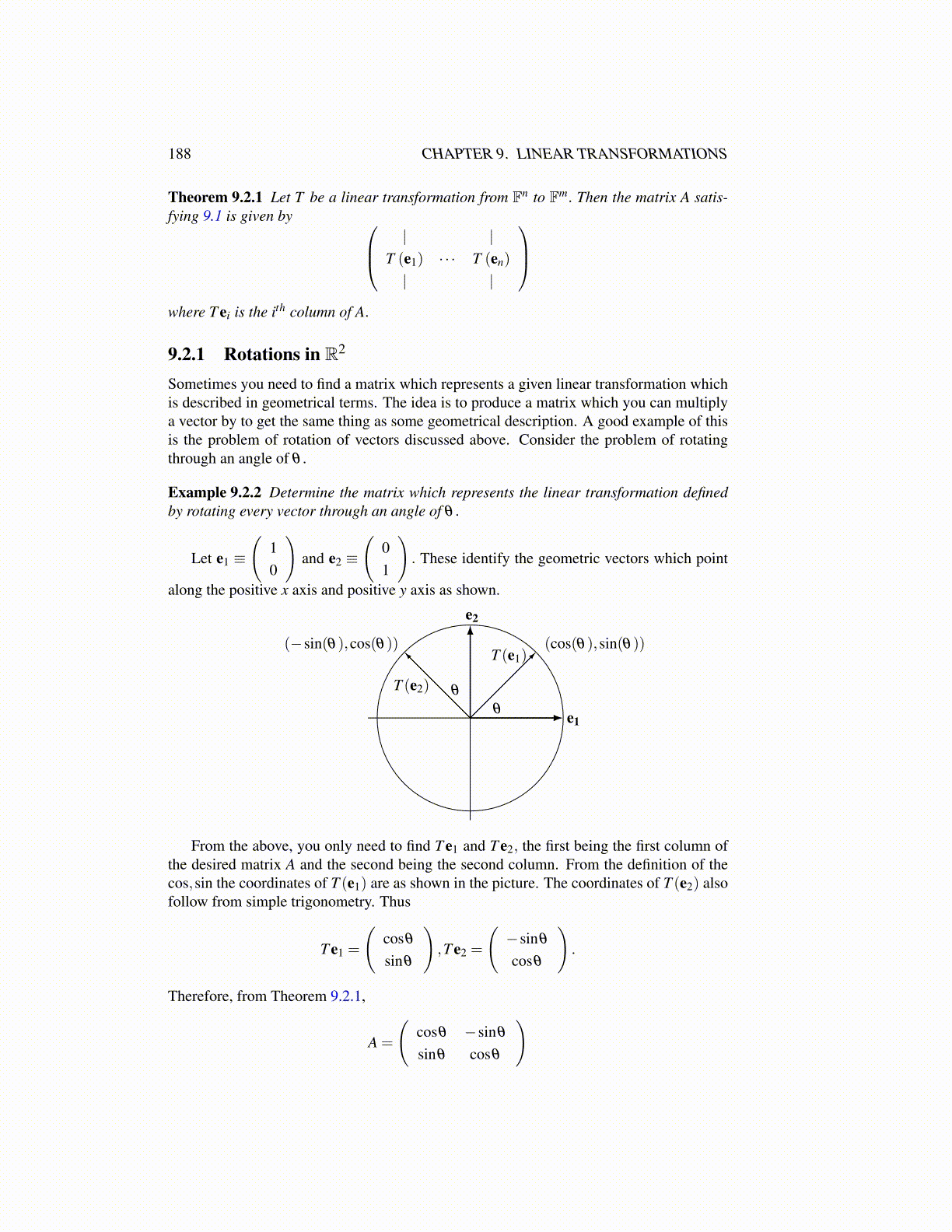
188 CHAPTER 9. LINEAR TRANSFORMATIONS
Theorem 9.2.1 Let T be a linear transformation from Fn to Fm. Then the matrix A satis-fying 9.1 is given by | |
T (e1) · · · T (en)
| |
where T ei is the ith column of A.
9.2.1 Rotations in R2
Sometimes you need to find a matrix which represents a given linear transformation whichis described in geometrical terms. The idea is to produce a matrix which you can multiplya vector by to get the same thing as some geometrical description. A good example of thisis the problem of rotation of vectors discussed above. Consider the problem of rotatingthrough an angle of θ .
Example 9.2.2 Determine the matrix which represents the linear transformation definedby rotating every vector through an angle of θ .
Let e1 ≡
(10
)and e2 ≡
(01
). These identify the geometric vectors which point
along the positive x axis and positive y axis as shown.
e1
e2
θ
θ
(cos(θ),sin(θ))(−sin(θ),cos(θ))T (e1)
T (e2)
From the above, you only need to find T e1 and T e2, the first being the first column ofthe desired matrix A and the second being the second column. From the definition of thecos,sin the coordinates of T (e1) are as shown in the picture. The coordinates of T (e2) alsofollow from simple trigonometry. Thus
T e1 =
(cosθ
sinθ
),T e2 =
(−sinθ
cosθ
).
Therefore, from Theorem 9.2.1,
A =
(cosθ −sinθ
sinθ cosθ
)